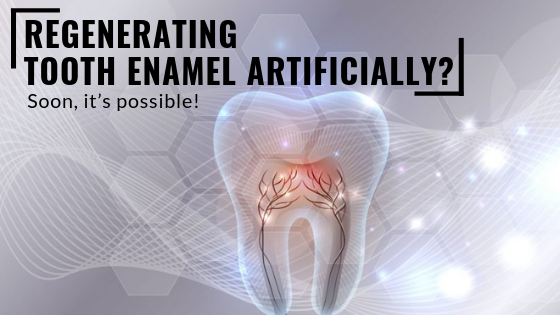
Billions of people around the world get dental problems such as tooth decay or loss of tooth enamel. Teeth, the hardest matter in your body which cannot be replaced with another tooth. Researchers are still studying the global problem hoping it will be solved sooner than later. To discuss such problems and share the advanced aspects, a global conference on dental science in Singapore next year.
In one such study conducted in China, a liquid solution was developed that could work on the damaged tooth enamel, restoring its external surface. They are experimenting with the natural mineralization process where the substance used is similar to the teeth’s protective external layer.
Ameloblasts cells get generated during the biomineralization process where they release proteins needed to make our outer coating of the teeth hard. Since mature teeth cannot repair themselves naturally once they’ve shaped, it becomes complicated and difficult to build ameloblasts after teeth have formed.
Scientists are still trying different methods to artificially coax through remineralized enamel. However, all past experiments so far have come short due to the complexity involved. To artificially mimic the crystalline structure of enamel.
While discussing one of such research studies researchers quoted, “We herein reveal that a rationally designed material composed of calcium phosphate ion clusters can be used to produce a precursor layer to induce the epitaxial crystal growth of enamel apatite, which mimics the biomineralization crystalline-amorphous frontier of hard tissue development in nature,”. The team led by biomimetics and materials scientist Zhaoming Liu. Researchers are working on a new type of calcium phosphate ion clusters in nanoparticles.
In the study, with the help of triethylamine chemical, the nanoparticles are aimed at stabilizing in a solution of ethanol. This is done to protect them from forming clumps.
When patients donate their teeth, these nanoparticles get together to the human enamel structure. This basically mimics the outer coating of teeth with an almost similar layer which is developed artificially.
Though the layer is extremely tiny than the full layer of the human tooth enamel, researchers suggest that multiple coatings with CPIC solution can possibly make the artificial enamel thicker.
The team further adds that the newly generated enamel has similar attributes and structure as you would find in natural tooth enamel.
While fillings are the common solution for teeth enamel problems, the development is expected to help get regrowth of the enamel without the help of fillings. The trials for the same are projected to start within two years.
To take it further, the research team will now start working on the safety part of the artificial enamel regrowth substance. Since this chemical evaporates in ethanol, this may create challenges making the substance risky to put in practice. It will be demonstrated in mice and then will be proceeded for clinical trials.
We may see further discussions through dental conferences in 2023. Though finding solutions to the teeth enamel damage is always a priority project in the dental science field, prevention from tooth decay and other problems is always promoted by dental scientists.